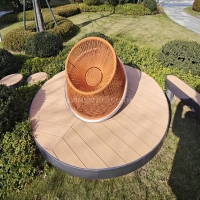Welcome to the website for landscape facilities products and knowledge.
What are the key factors in determining the optimal base design for stability?
When designing a stable base, several critical factors must be considered to ensure long-term structural integrity and performance. The first factor is load distribution, which involves evenly spreading the weight to prevent uneven stress points. A well-distributed load minimizes the risk of cracks or collapses.
Next, material selection plays a pivotal role. Durable materials like reinforced concrete or steel provide the necessary strength to withstand environmental and operational stresses. The choice of material should align with the intended use and environmental conditions.
Another key factor is foundation depth. A deeper foundation enhances stability, especially in areas with loose soil or high seismic activity. Proper anchoring and soil testing are essential to determine the ideal depth.
Additionally, geometric design influences stability. A wider base with a low center of gravity resists tipping forces better than a tall, narrow structure. Engineers often use trapezoidal or pyramidal shapes for optimal balance.
Lastly, environmental considerations such as wind, water, and temperature fluctuations must be addressed. Drainage systems, insulation, and wind-resistant features can significantly improve a base's durability.
By carefully evaluating these factors—load distribution, material selection, foundation depth, geometric design, and environmental conditions—engineers can create a base design that ensures maximum stability and longevity.
Related search:

Recommendation
Swivel chair-Specialty steel structure woven rattan leisure chair with rotatable design